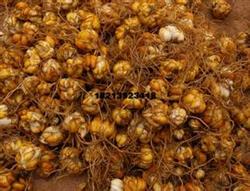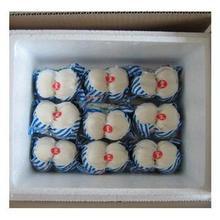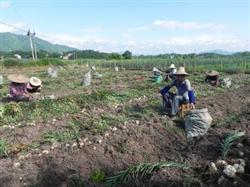Main Diseases and pests of Lily and their Control

Lily is native to East Asia and is cultivated as a flower in Europe and the United States, while bulbs are cultivated as an edible crop in China. There are not many kinds of diseases and insects in lilies, but the damage is serious, with a loss rate of 30% to 60% in the year of serious disease. In order to do a good job in the control of lily diseases and insect pests, we made a preliminary investigation on the species, chemical control experiments and comprehensive control measures of the main lily diseases and pests in Shaodong area from 1993 to 1998, which laid a foundation for the control of lily diseases and insect pests in a large area. 1. Lilium botrytis cinerea (Botrytiselliptica Cooke) is commonly known as lily leaf blight. Mainly damage leaves, but also infect stems, flowers, buds and bulbs. The disease spot on the leaf is round or oval, yellowish brown or reddish brown, the center of the spot is light yellow or light brown, and the edge is purplish red or light red. When the weather is wet, the disease part produces a gray mildew layer; when dry, the disease spot becomes thin and brittle, translucent, light gray. When the spot expands, the leaves wither and die. Buds and flowers suffer, scald like boiling water, turn brown and rot. Stem damage, resulting in light brown ulcer spots, very easy to wind break. The infection of young plants often causes the death of the growing point. Sometimes it also infects the bulb and can cause the bulb to rot. Botrytis cinerea of lily mainly passes through the bad environment with sclerotia. In spring, conidia are produced by sclerotia and spread rapidly in the field by wind, rain and airflow. It started in early May and flourished from late May to late June. The temperature in this period is high, and if there is a long-term overcast and rain, the disease will accelerate the epidemic. Prolonged rain and thundershowers can promote the epidemic of the disease. The application of immature organic fertilizer, too much nitrogen fertilizer, too late and low-lying stagnant water are all beneficial to the disease. 1.2 Lily blight [Phytophthoracactorum (Leb.etCohn) Schrot] is commonly known as foot rot. The stem was damaged near the ground, and the diseased part appeared waterlogged disease spot, browning and constriction, and the upper part of the plant withered and often lodged and died. The bulb is damaged when it germinates, and the tip of the tender stem dies. The bulb is susceptible with primary oily spots and gradually expands to grayish brown soft rot. The leaves and flowers were infected, and the oil stains on them were small, gradually enlarged and turned gray-green. There is a white mildew layer on the disease spot when it is wet. The pathogen of lily blight overwintered mainly as oospores in soil remnants. The disease began from the emergence of seedlings, and there were a large number of symptoms in the aboveground part in the middle and late May. The application of immature organic fertilizer, low-lying stagnant water, wet and rainy weather and insect pests are all beneficial to the disease after the wound caused by the bulb. The disease of continuous cropping is serious. 1.3Colletotrichum anthracnose (Colletotrichumliliaecearum Ferr.) It mainly harms bulbs and also infects leaves and flowers. After the bulb was infected, irregular and light brown spots appeared at the initial stage, then light dark brown, slightly sunken, and finally the disease spot was almost black, and the tissue contracted and dried. The outer bulb suffered the most and gradually extended to the inner layer. The leaves were damaged, resulting in oval, yellowish disease spots, black-brown edges, and slightly sunken. Colletotrichum gloeosporioides overwintered in the affected area with hyphae and produced conidia the following year, which were spread by wind and rain. The land with heavy soil and high water content; the land with many lily mites; the land with many diseased bodies was seriously affected by planting in successive years. The common lily virus diseases of Lilysymptomlessvirus are verticillium wilt type and mosaic type. Verticillium wilt type: there are no special disease spots on the leaves, the whole plant is yellow, the internodes are shortened, the plants are dwarfed, and the leaves are yellowed and atrophied. Mosaic type: irregular light green mottles are produced on the leaves, and then the small light parts are connected and enlarged, forming slender yellow spots along the veins, which later become slightly sunken and turn yellowish brown to reddish brown. The virus overwintered mainly in the bulb and became the source of infection at the beginning of the second year, and the reinfection in the field was mainly caused by aphids. The disease occurs seriously when there are many diseased bulbs, dry weather and a large number of aphids. 1.5 lily mite [Rhizoglyphusechinopus (FumouzeetRobin)] is also called acaroid mite. Gnawing on lily bulbs, spreading germs, causing lily rot. The lily mite body is oval, thick, white or light yellow, the jaw and feet are light brown, and the body surface is smooth and shiny. Lily mites like to live in a warm, cool and humid environment. It takes about 10 to 14 days to complete one generation, and more than 20 generations can occur in one year. Overwintering with eggs and adult mites in lily cores or soil. The first and middle of April are the periods of mass occurrence of mites after overwintering. Female mites lay eggs on lily bulbs. The adult nymph mite cluster feeds on the lily bulb, which is in the shape of a sieve hole, which makes the aboveground part of the killed lily die, and the bulbs and roots turn dark brown and rot. two。 Control measures 1) crop rotation for 3 years. When planting lilies along the slope, they should be planted from the bottom up to reduce the spread of germs. 2) the bulbs without disease, mite and mechanical injury were selected as seeds to reduce the source of bacteria and mites. 3) burn the litter, disease and insect residues in the field, and reduce the source of diseases and insect pests. The organic fertilizer was compost and fermented and then applied to the lower layer of the soil. 4) Deep ditch and high border, clear ditch and drain, and control soil water content. 5) seed soaking and disinfection to kill mites. Before sowing, soak the bulb 3~5min (when the temperature is above 30 ℃, the time is shortened to 3min) with 4000-fold solution of 20% promethazine wettable powder and 1000-fold solution of methyl topiramate to sterilize and mite. 6) chemical control in the field. According to the experiment and investigation, the prevention and control of chemical agents in the field is important, and it is expensive in the early stage, and the prescription is effective for many times. When sowing ① seeds, each 667m2 is made of 10% mixed phosphorus powder granules plus 50% dimethyloxone wettable powder 2kg or 50% methyl topiramate wettable powder 0.5kg, applied in the sowing ditch, and then sowed and covered with soil. In the first and middle of April, ② was drenched with 20% acetaminophen wettable powder 3000x solution or 40% isocarbophos EC 1200x solution plus 5% bacteriological dehydrated agent 300x solution or 50% dimethazone wettable powder 700x solution. Leaching should be carried out in sunny or cloudy days when there is no water in the soil, and hoe the topsoil layer before application, otherwise, the effect is poor and affect the normal growth of lilies. 2 to 3 times, each time at an interval of 15 to 20 days. ③ was protected by spraying from the emergence of lily seedlings. It was applied once every 15 days and continuously for 6 or 7 times (including ② application). Spraying and leaching were carried out alternately. In addition to the agents in ②, 50% mancozeb wettable powder and 75% chlorothalonil wettable powder were used.
- Prev

Cucumber-Lily rotation technique
(1) selection of storage-tolerant varieties China is the country of origin of lilies, and there are many types and varieties of cultivation. There are mainly varieties such as Longya lily, Sichuan lily and lily lily. Among them, the white, flat ball-shaped, tightly clasped, sweet Sichuan lily is of good quality and resistant to storage. Lilies are usually harvested in early November and are often dug out with spades.
- Next

Harvesting and Storage of Lily bulbs
1. Seed ball mining when the temperature begins to drop in autumn, the aboveground stem has begun to die, and the mother ball develops to a certain extent, the seed ball is dug in sunny days. Before digging, the dead stems of the aboveground must be extracted and burned centrally, so as to reduce the pathogen. At the same time, pay attention to mining do not damage scales, or remove damaged scales, in order to.
Related
- Fuxing push coffee new agricultural production and marketing class: lack of small-scale processing plants
- Jujube rice field leisure farm deep ploughing Yilan for five years to create a space for organic food and play
- Nongyu Farm-A trial of organic papaya for brave women with advanced technology
- Four points for attention in the prevention and control of diseases and insect pests of edible fungi
- How to add nutrient solution to Edible Fungi
- Is there any good way to control edible fungus mites?
- Open Inoculation Technology of Edible Fungi
- Is there any clever way to use fertilizer for edible fungus in winter?
- What agents are used to kill the pathogens of edible fungi in the mushroom shed?
- Rapid drying of Edible Fungi

